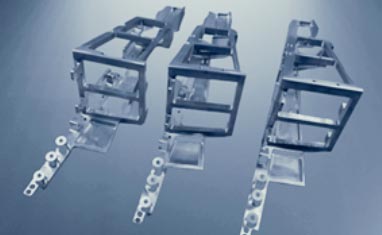How do you make a metal prototype?
Views: 917 Update date: Apr 08,2024
Creating a metal prototype involves several steps, including design, material selection, fabrication, and testing. Here's a general overview of the process:Design: Begin by creating a detailed design of your prototype using computer-aided design (CAD) software. This design should include all the necessary dimensions, features, and specifications.
Material Selection: Choose the appropriate metal material for your prototype based on factors such as strength, durability, conductivity, and cost. Common metals used for prototypes include aluminum, steel, brass, and titanium.
Fabrication Method: Determine the best fabrication method for your prototype based on the complexity of the design and the chosen material. Some common methods for metal prototyping include:
CNC Machining: Computer Numerical Control (CNC) machining is a subtractive manufacturing process where a computer-controlled machine removes material from a solid block of metal to create the desired shape.
3D Printing/Additive Manufacturing: Metal 3D printing, also known as additive manufacturing, builds up layers of metal powder or wire to create the prototype layer by layer. This method is suitable for complex geometries and low-volume production.
Sheet Metal Fabrication: Sheet metal fabrication involves cutting, bending, and assembling thin sheets of metal to create the prototype. This method is ideal for prototypes with flat or curved surfaces.
Casting: Casting involves pouring molten metal into a mold cavity and allowing it to solidify to form the prototype. It's suitable for producing prototypes with intricate shapes or complex internal features.

Prototyping Process:
CNC Machining: Prepare the CNC machine by programming it with the CAD design. The machine will then use various cutting tools to precisely shape the metal according to the design.
3D Printing/Additive Manufacturing: Prepare the 3D printer by converting the CAD design into a format suitable for printing. The printer will then build the prototype layer by layer using the chosen metal material.
Sheet Metal Fabrication: Cut the metal sheet to the required dimensions using shearing or laser cutting techniques. Bend the sheet metal using press brakes or other bending tools to achieve the desired shape.
Casting: Create a mold of the prototype design using materials such as silicone, plaster, or metal. Then, pour molten metal into the mold cavity and allow it to cool and solidify. Once solidified, remove the prototype from the mold.
Finishing: After the prototype is fabricated, it may require additional finishing processes such as sanding, polishing, painting, or coating to improve its appearance and functionality.
Testing and Iteration: Test the metal prototype to ensure it meets the desired specifications and performance requirements. If necessary, make adjustments to the design and fabricate a new prototype until you achieve the desired outcome.
Documentation: Document all the steps involved in the prototyping process, including design iterations, material selection, fabrication methods, testing results, and any modifications made to the prototype. This documentation will be valuable for future reference and improvements.
By following these steps, you can create a metal prototype that accurately represents your design concept and serves as a functional model for further development and testing.



